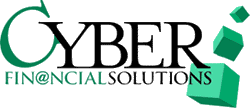Tap Into the Way Your Employees Learn
There’s ample scientific evidence supporting the idea that constant learning is good for the brain. Marian Diamond, a renowned neuroscientist, says that the brain can actually become sharper and stronger with a little focused effort. With this in mind, implementing a purposeful employee learning initiative at your office can help create sharper, stronger, higher performing brains.
For many professionals, continuing education is required by law. Medical professionals, attorneys, pilots and accountants are all subject to these rules. For the rest of us who don’t stand to lose a license if we fail to keep learning, what’s the best way keep the mind agile?
I’ve adopted the mantra “Never Stop Learning”. In addition to applying this concept to my own personal growth, one of my top priorities as a leader is to provide opportunities to make sure my team is growing and operating at its best. Continual learning is a competitive advantage–when your mind is sharp you can excel in the areas where you have a strength, but you can also easily tap into other parts of the brain that you may use less often.
For us, we consider our team members’ thinking and behavior preferences every day when we assign tasks and assemble teams. Why should it be any different when it comes to learning?
With that in mind, here are three ways that we promote learning within the organization.
Recognize Different Learning Styles
Individuals learn through different styles, and these styles are often seen through their thinking and behavioral preferences. And in the same way that we strive for thinking and behavior diversity when we assign tasks and assemble teams, it’s no different when it comes to learning.
The first thing to do is to recognize that there are many learning styles within your ranks, and one size does not fit all. Here is a sampling of how different thinking preferences prefer to learn.
Analytical: Whether it’s a book, a lecture, a field trip or whatever, our Analytical minds are going to learn something if it’s impactful and relevant. It will also prefer knowing how a given educational experience applies to their real world scenarios.
Structural: Our Structural thinkers are the box checkers and will often appreciate a detailed, “how-to” book. If you bring in a speaker, make sure he/she arrives on time, has an agenda, and gives an organized and practical lesson. These presentation steps will enhance the Structural thinker’s learning experience.
Social: Social thinkers love anecdotes, analogies, and hearing about real situations and real people. Anything put into story form will be valuable and memorable for these folks.
Conceptual: These thinkers may find more ideas about how to improve a work process in the pages of Alice’s Adventures in Wonderland than they would in the same how-to book that the Structural thinker is reading. The key for Conceptual thinkers is to keep it fresh, interesting, and constantly moving.
People’s behavioral preferences also play a big role in the way they will effectively assimilate the information they hear.
Expressiveness: A group activity requiring participation from everyone could be perfect for a gregarious individual, while a more reserved person would prefer a quiet, contemplative space.
Assertiveness: A driving individual will learn through challenge and debate, while a peacekeeper will appreciate a polite dialogue.
And finally,
Flexibility: A focused individual will prefer to stay on task until the learning is complete, while an accommodating individual will be okay with learning in small doses.
Regardless of an individual’s style, providing a method that honors this diversity will create an environment that fosters learning for everyone.
Offer a Variety of Media
Embracing variety is also a key aspect of successful adult learning. The traditional, 60 minute lecture is quite common in the business world and very appealing for many individuals. There are also other forms of delivery that are just as effective. Action learning, eLearning, videos, role playing, experiential learning, and gamification are just a few examples of how people effectively receive information and learn important principles.
In our office, we tailor our options to give our team members choices that fit their thinking and behavior preferences. Depending on the objectives of the learning, I may suggest a book or take a group outing or bring in a speaker. Being intentional about utilizing different learning vehicles helps increase engagement and overall satisfaction with the engagement.
Reflect and Retain
If you don’t retain the information, what good was the learning? This is where reflection is crucial. In general, people do not take enough time to reflect. From a brain circuitry perspective, reflection is incredibly beneficial to the learning process. It taps into all aspects of your experiences, clarifies your thinking, and consolidates in your mind what matters most and what you wish to achieve. Reflection deepens your neural pathways, anchors your learning and can dramatically improve information retention.
In the words of our Founder, Dr. Geil Browning, “The brain’s food is oxygen and nutrients, but the brains enrichment is education, reading, and life experiences.” The key to developing your mental edge is constant learning, and these steps will help you create a fun, engaging, and effective learning program that stimulates your workforce and assists in its overall productivity and satisfaction.
This article was written by Morgan Browning and reposted from Inc.

